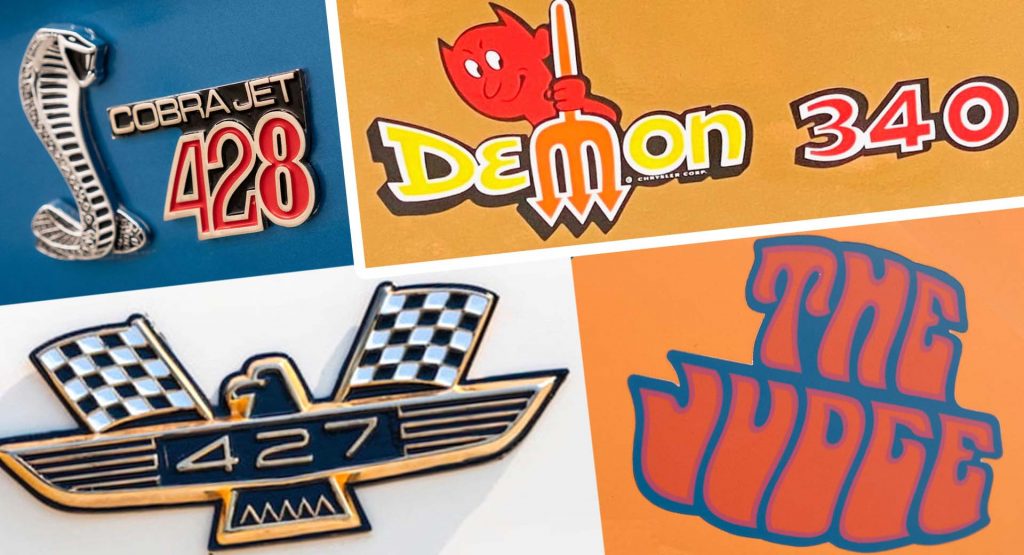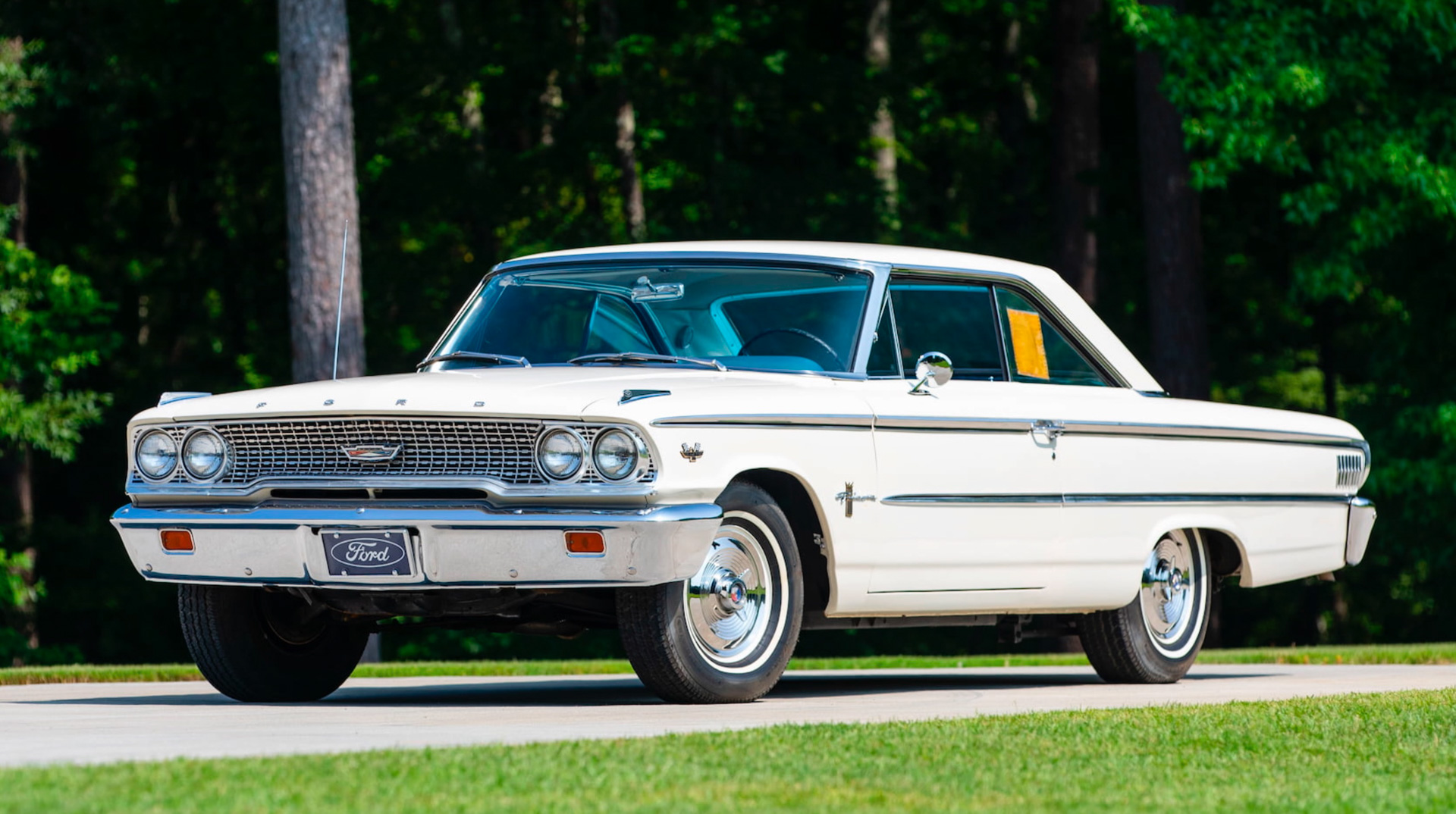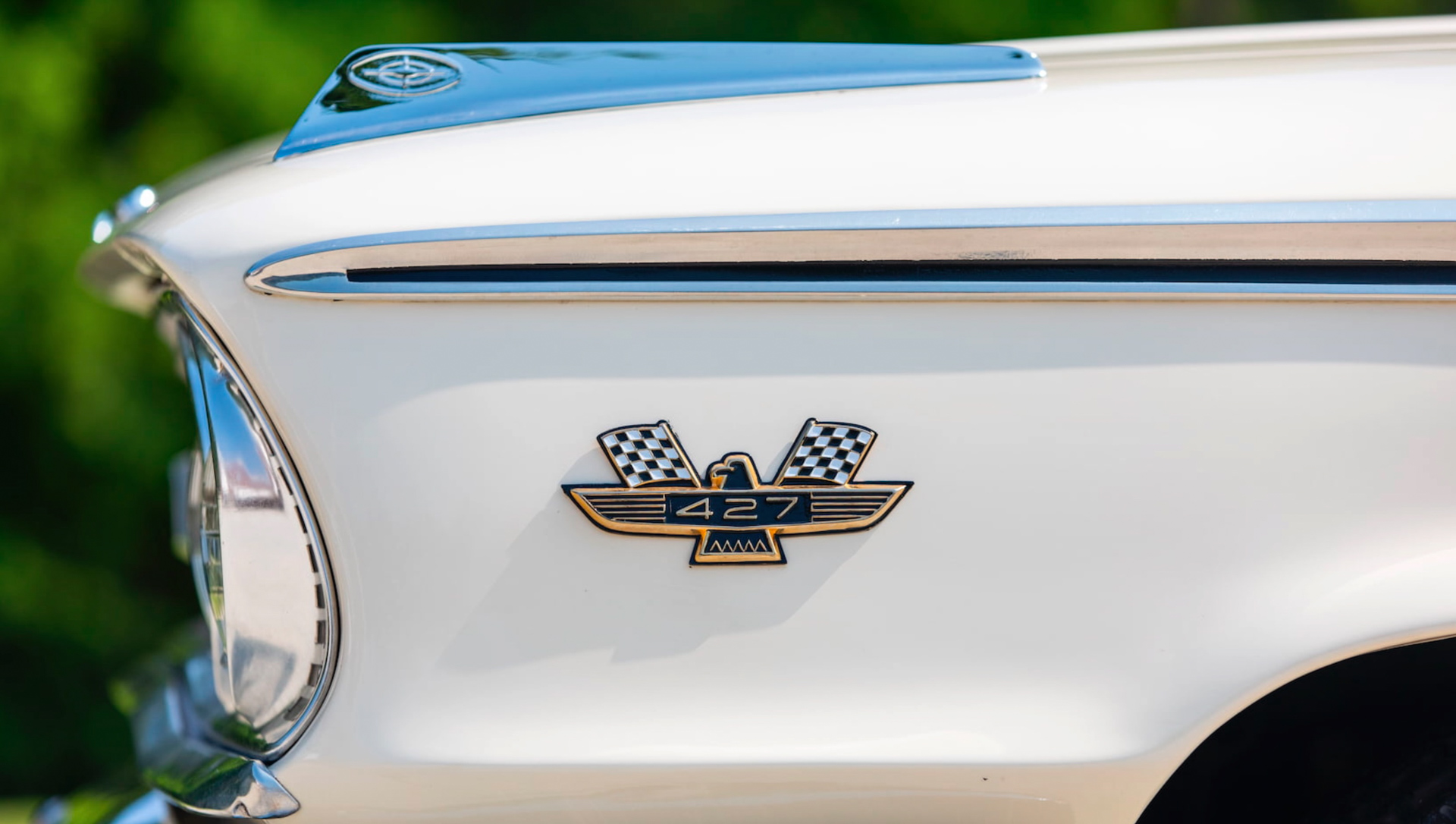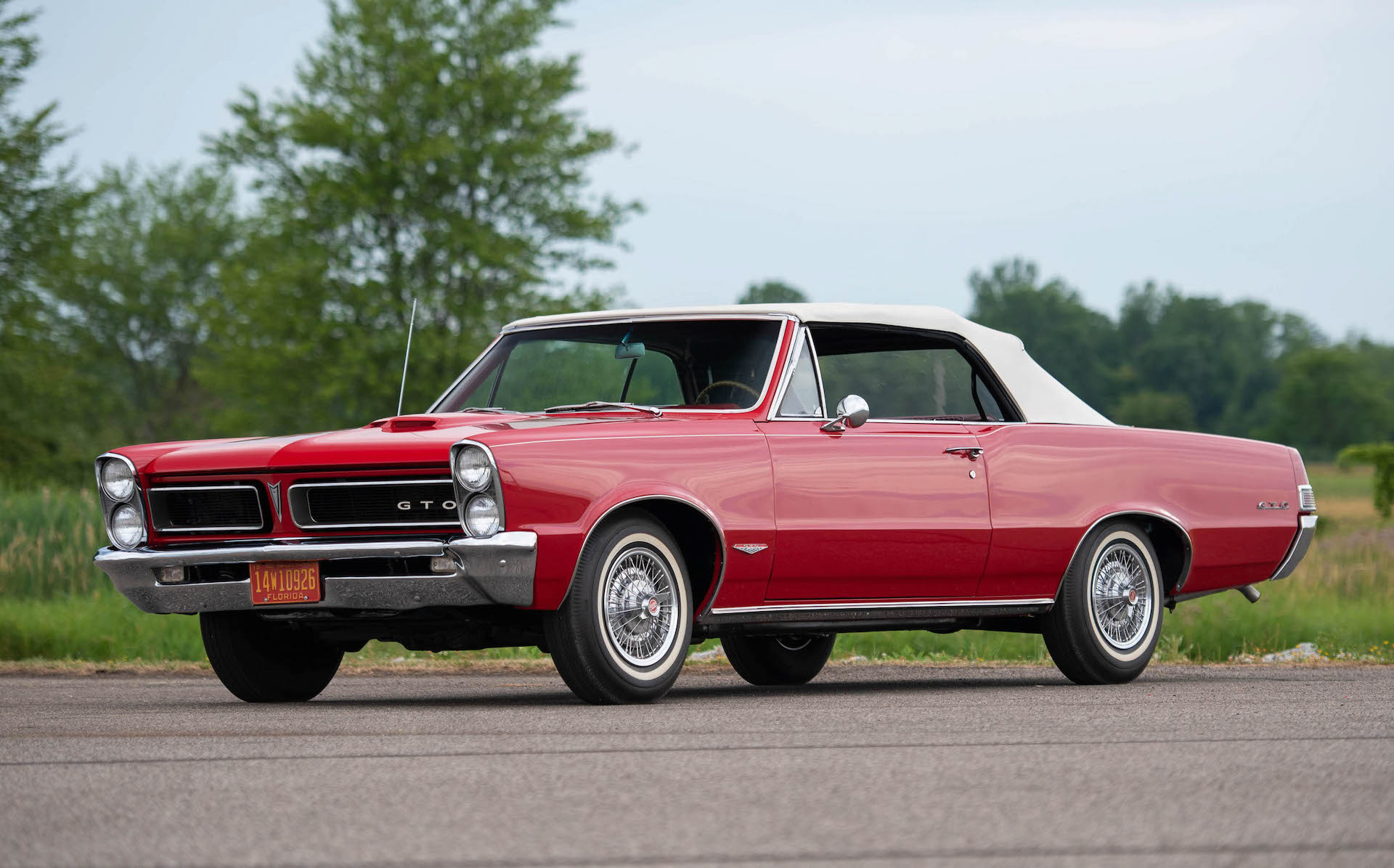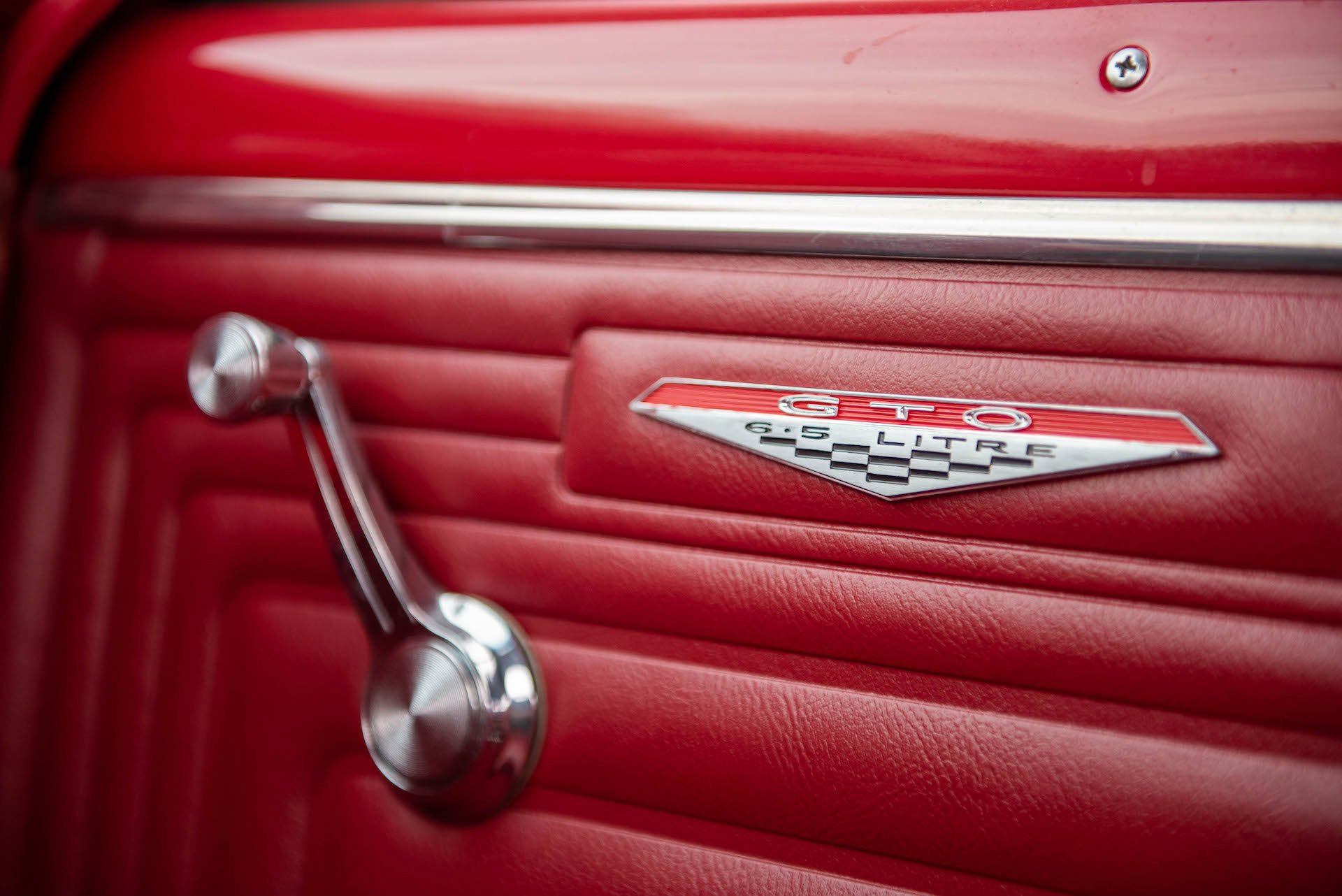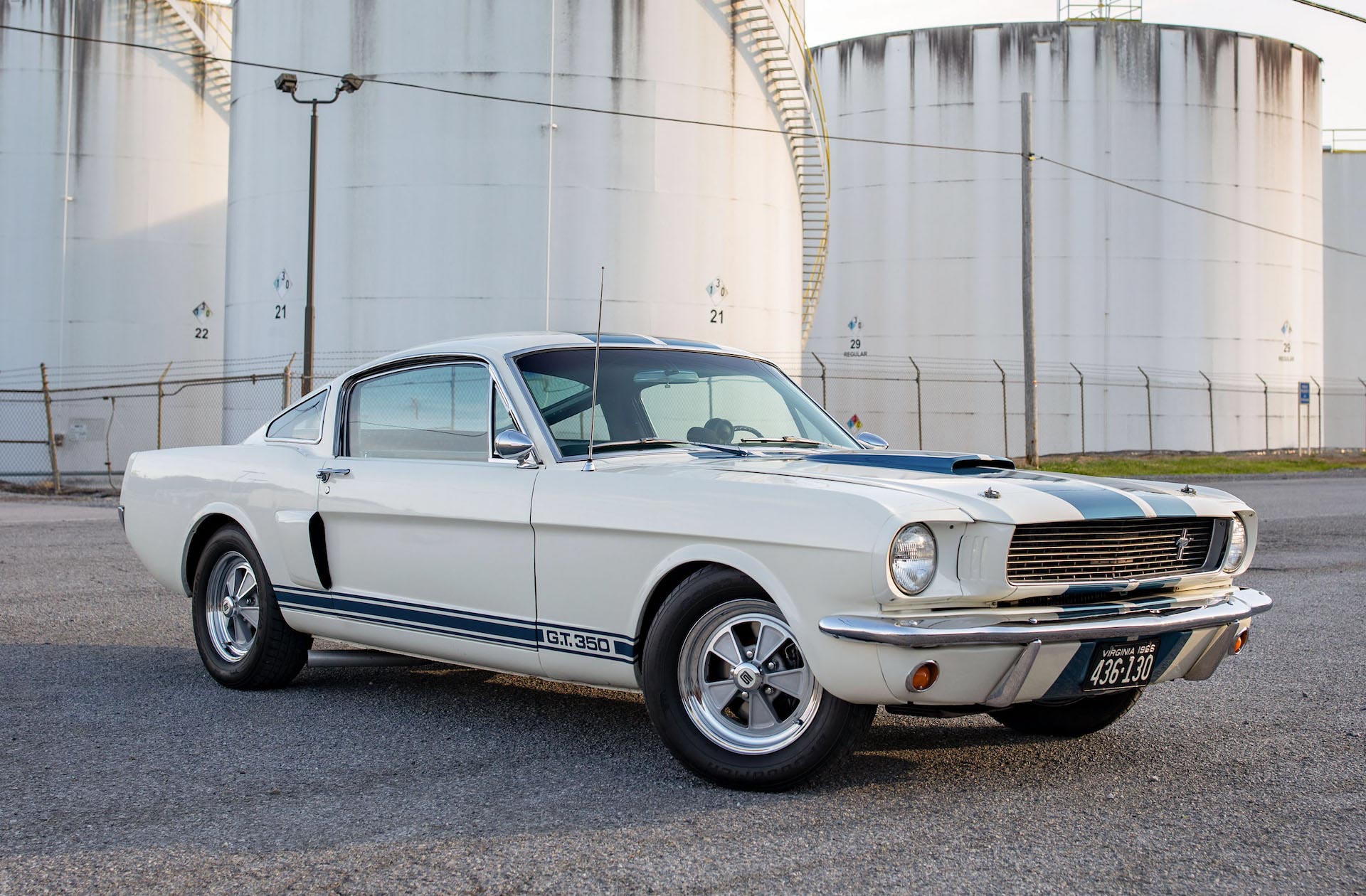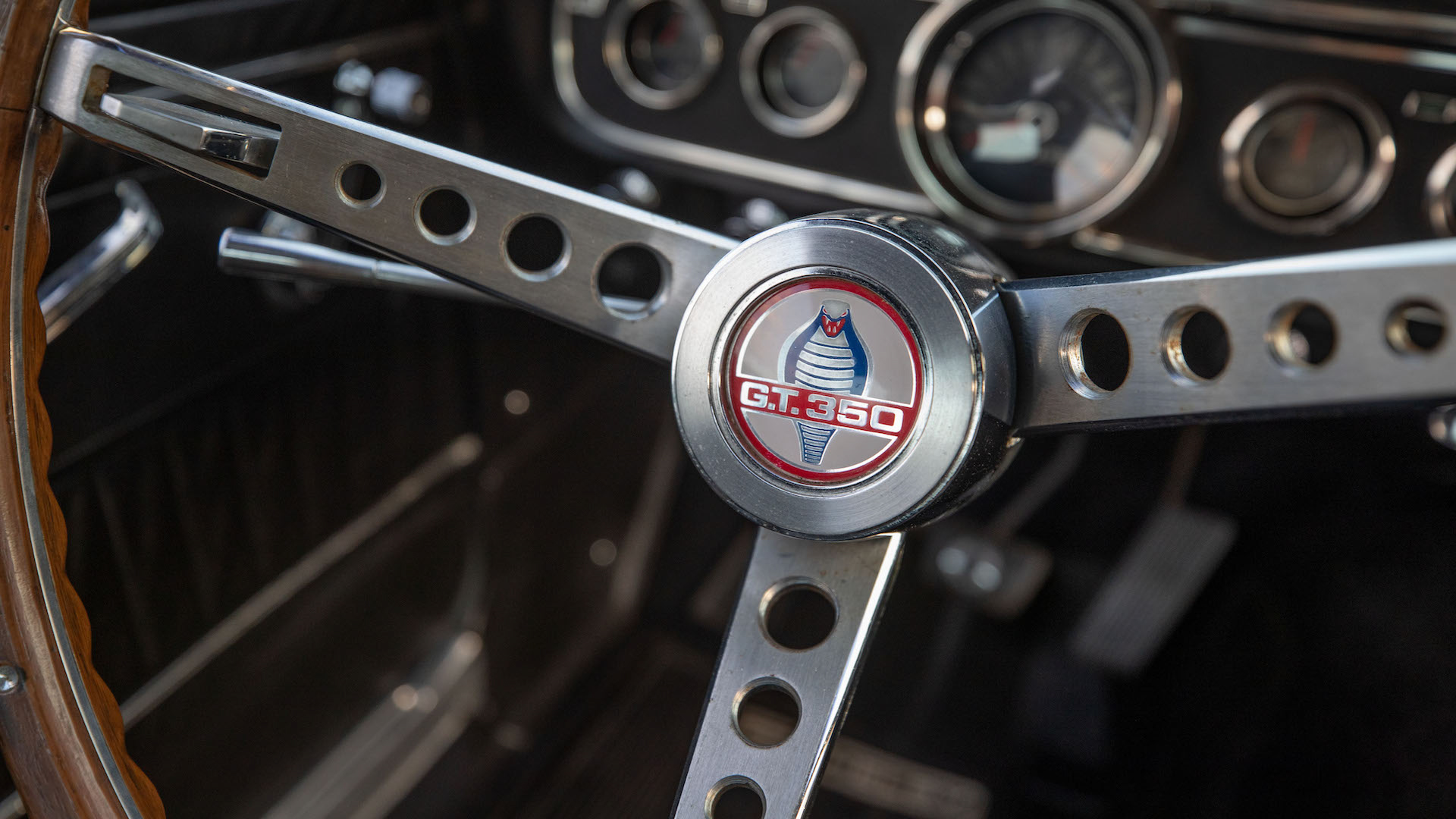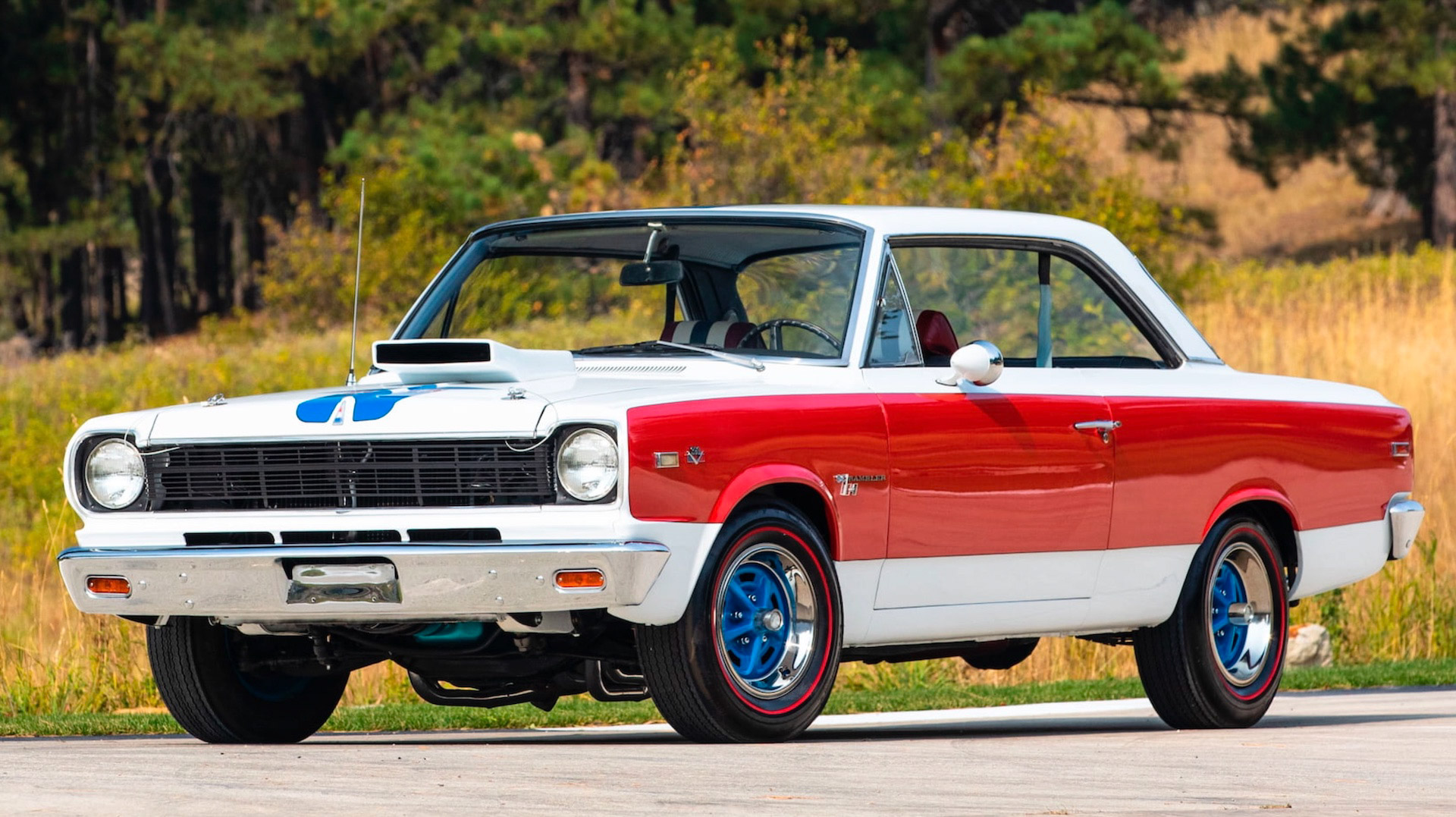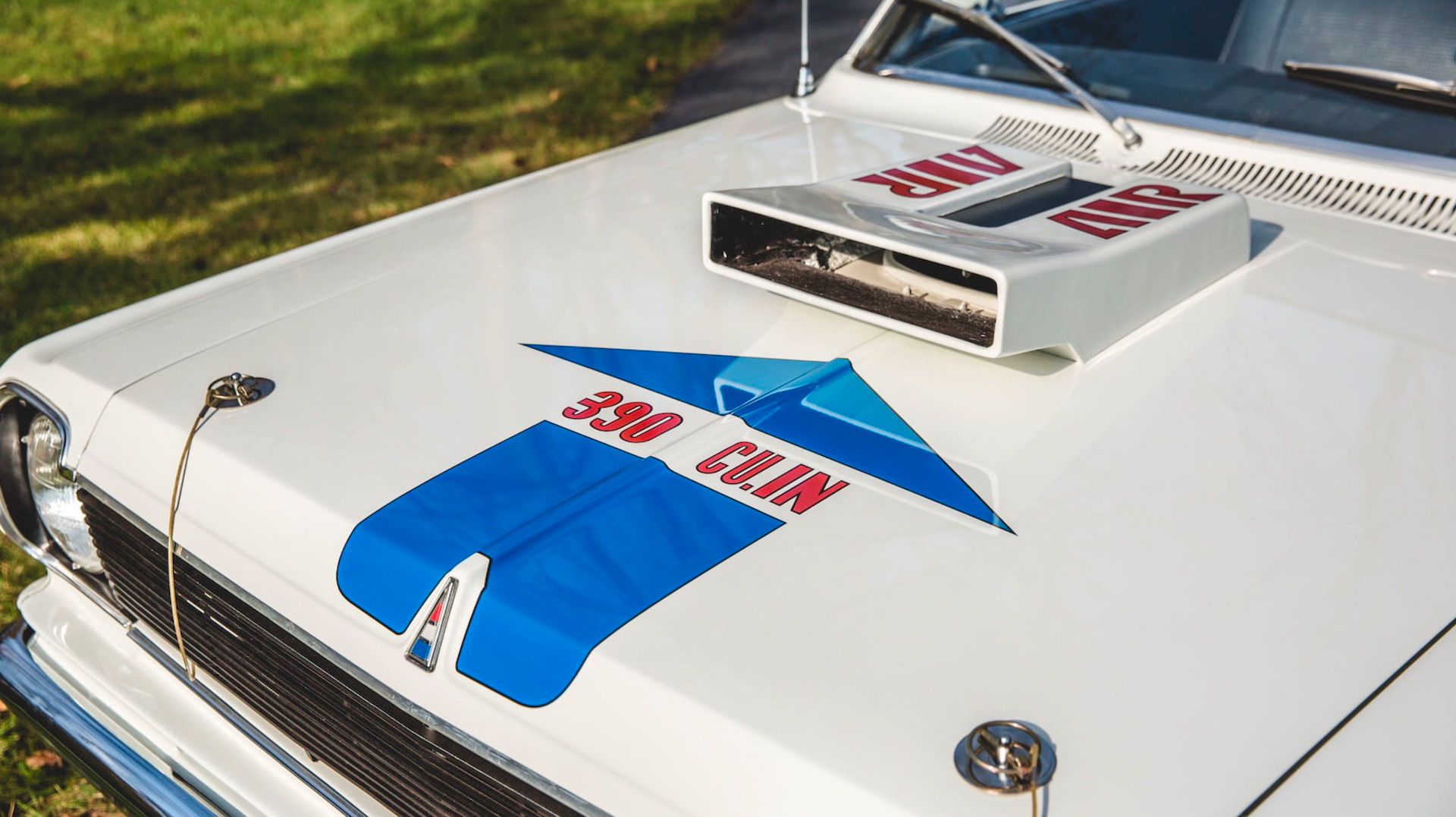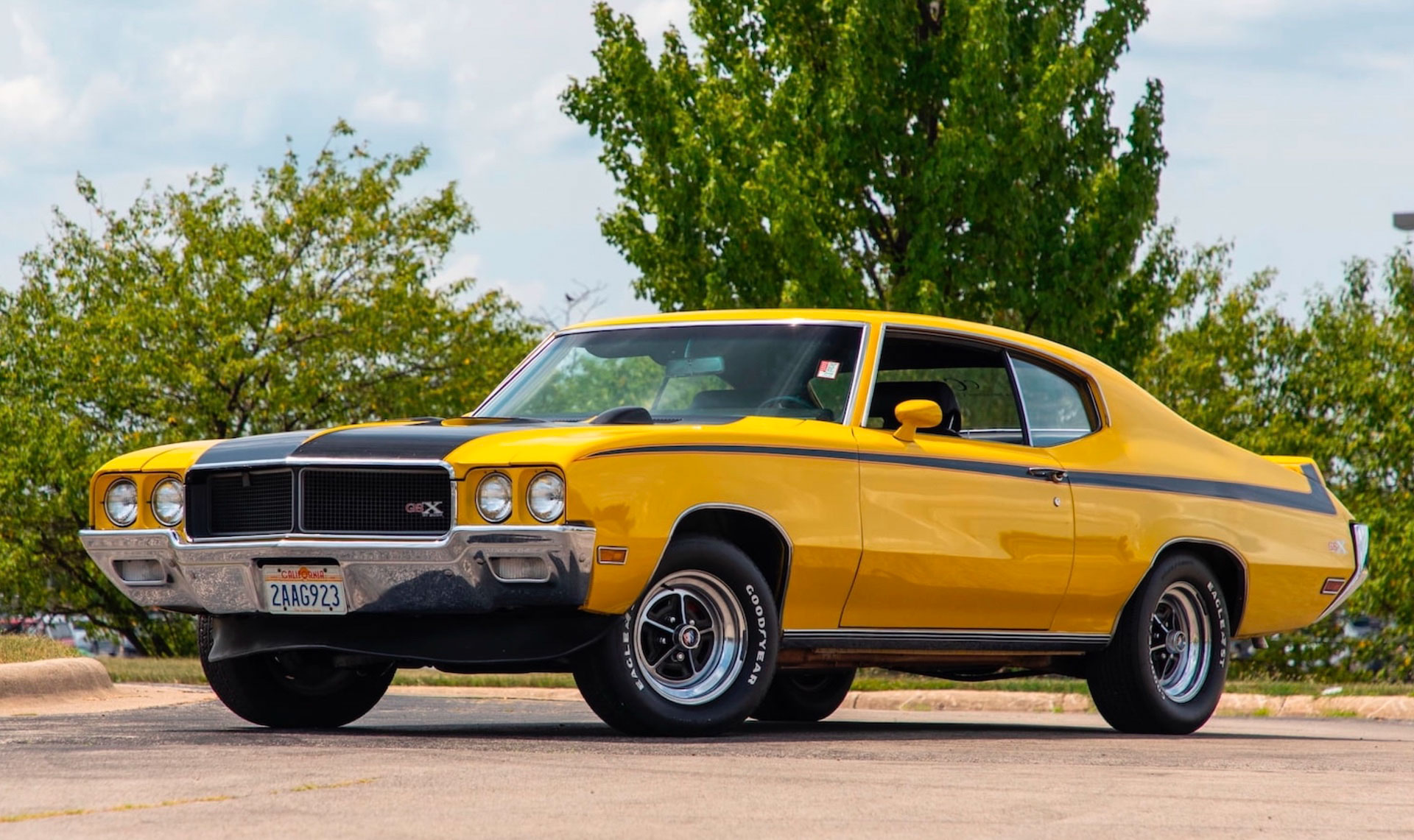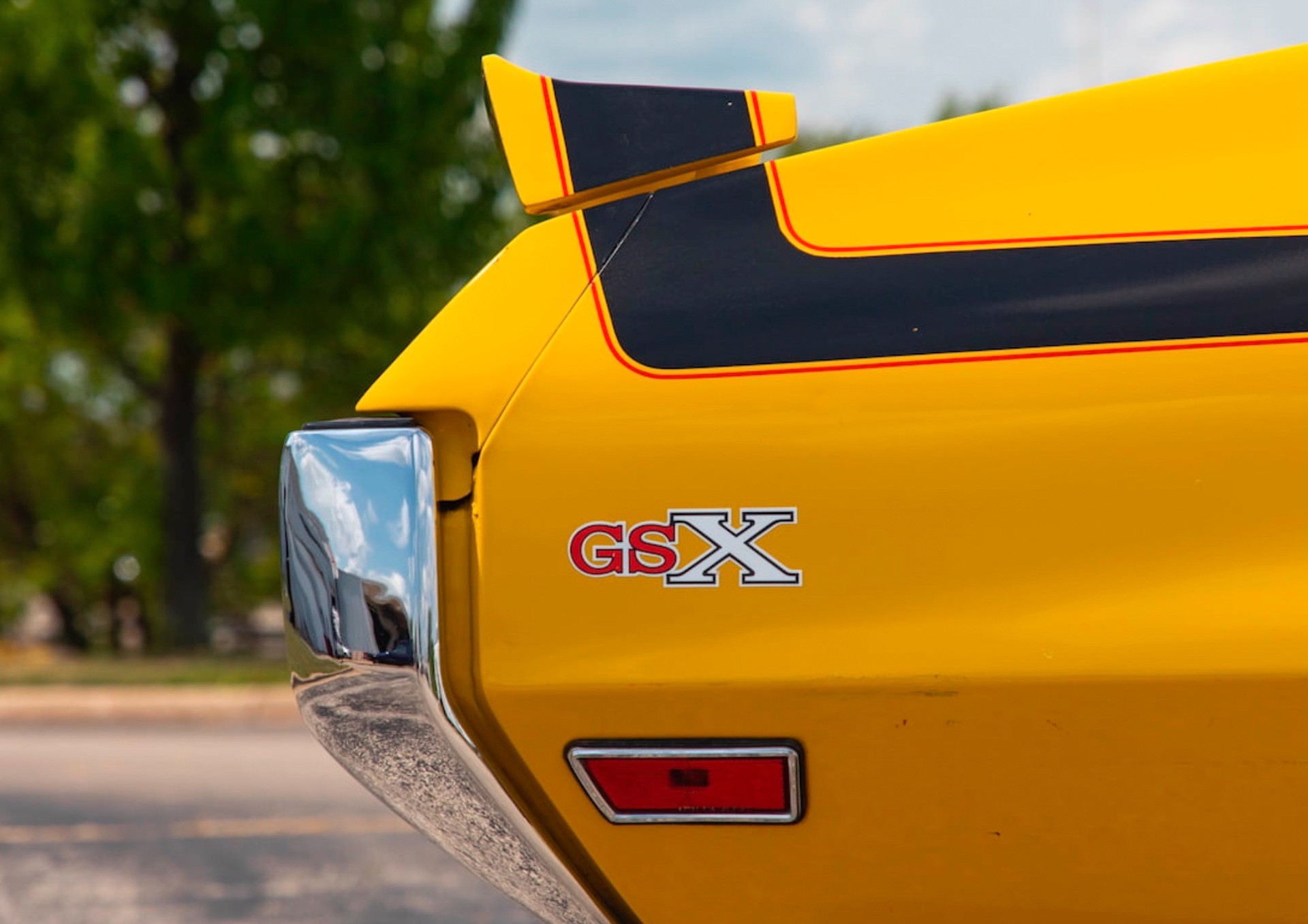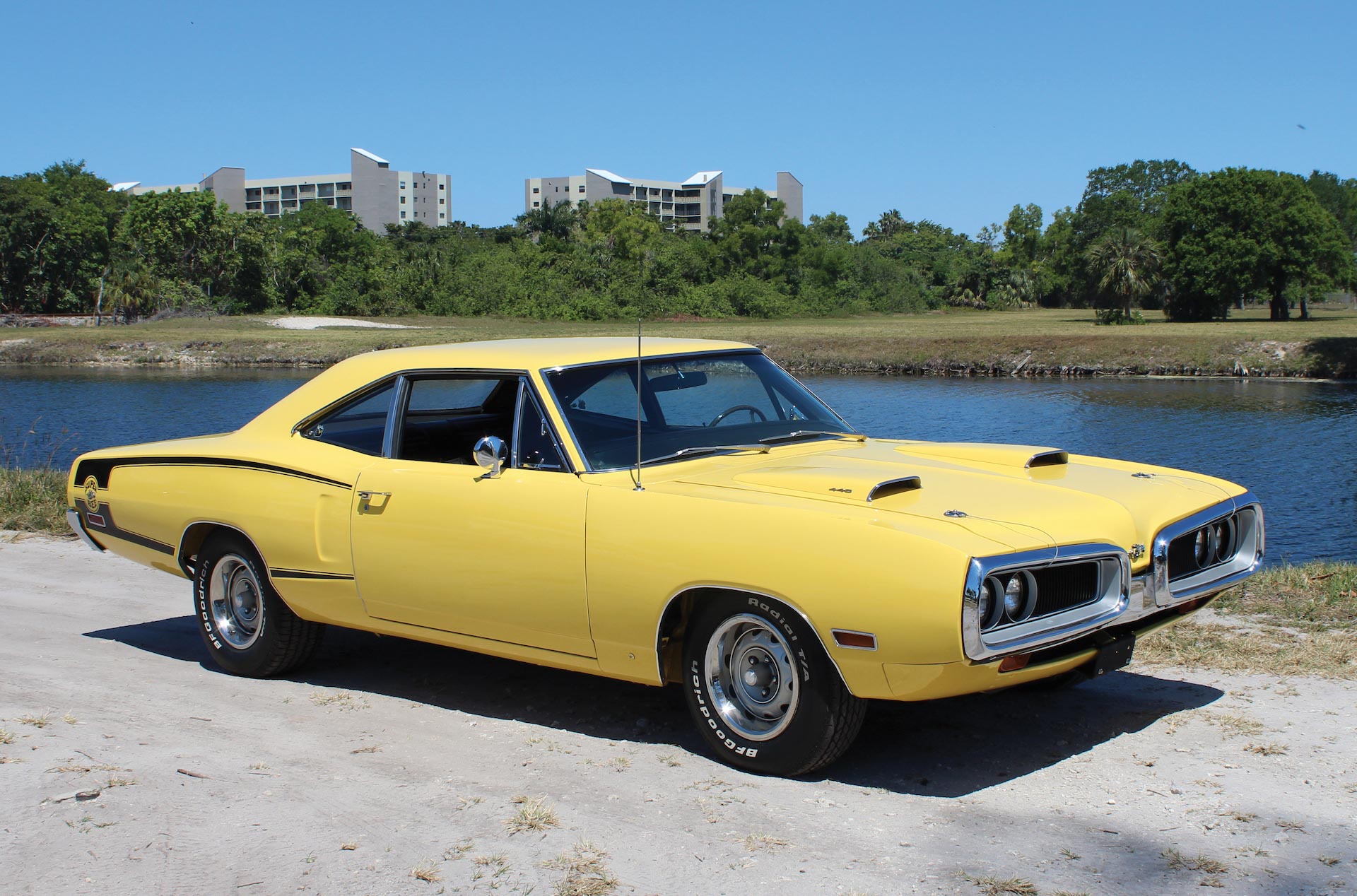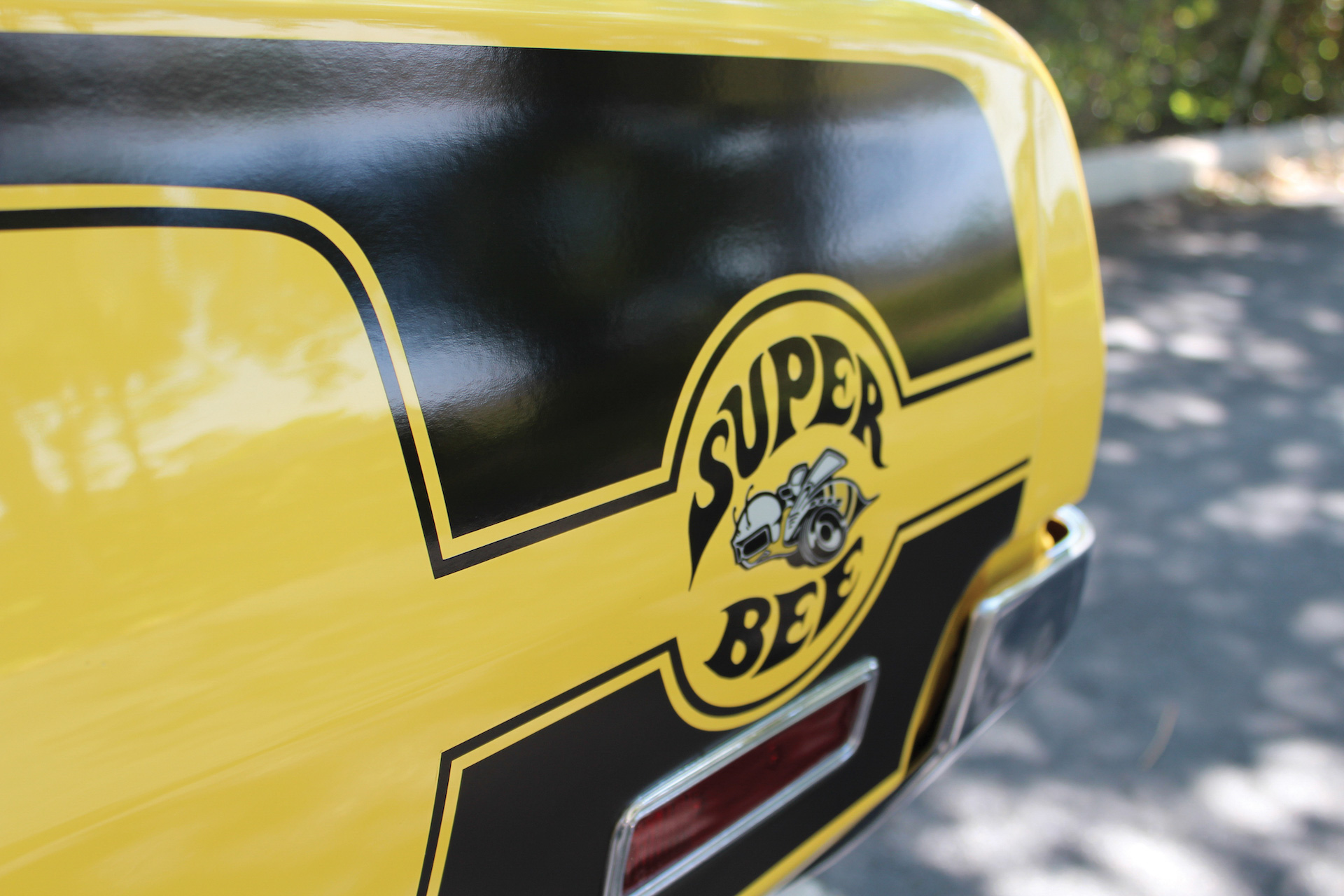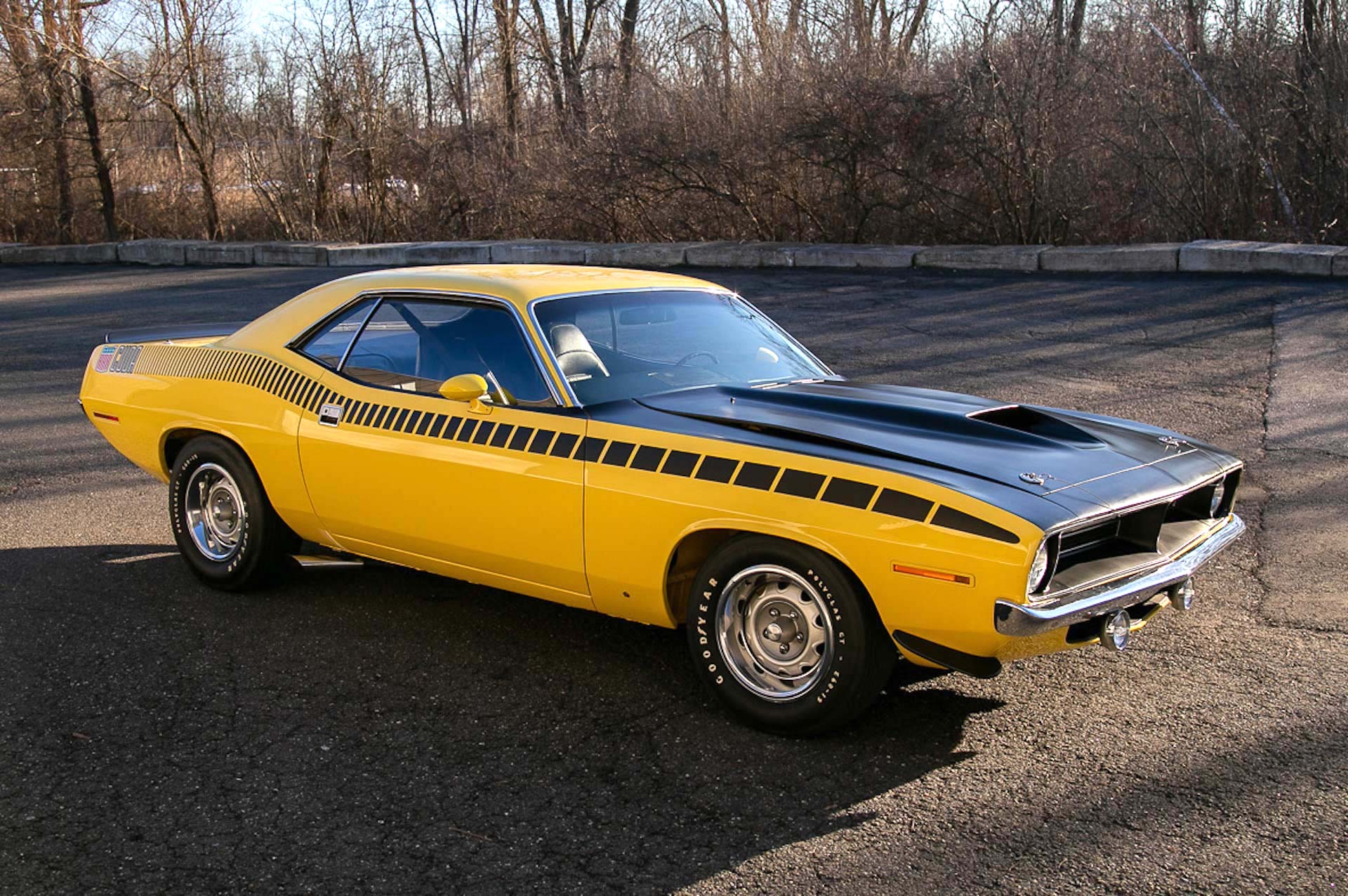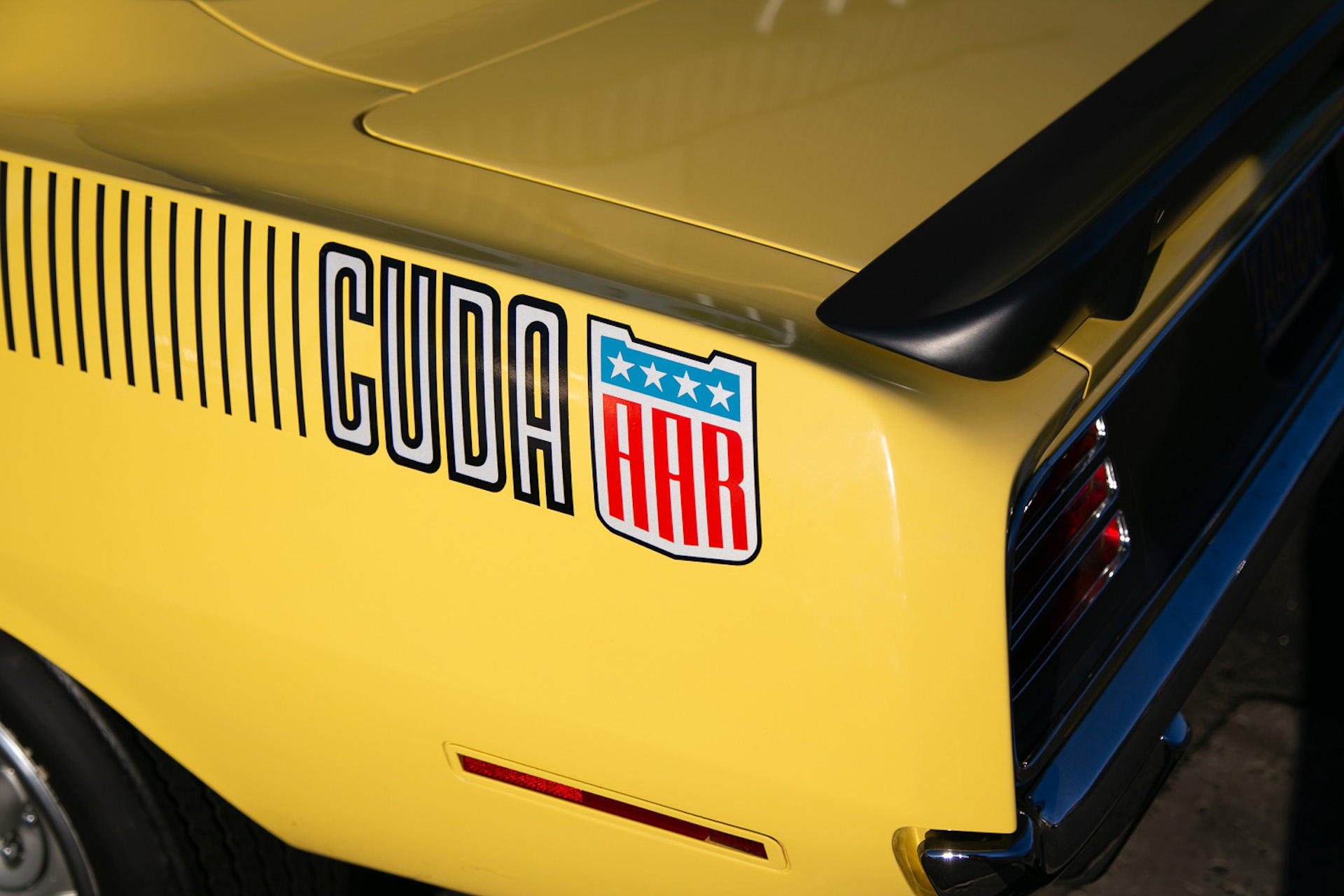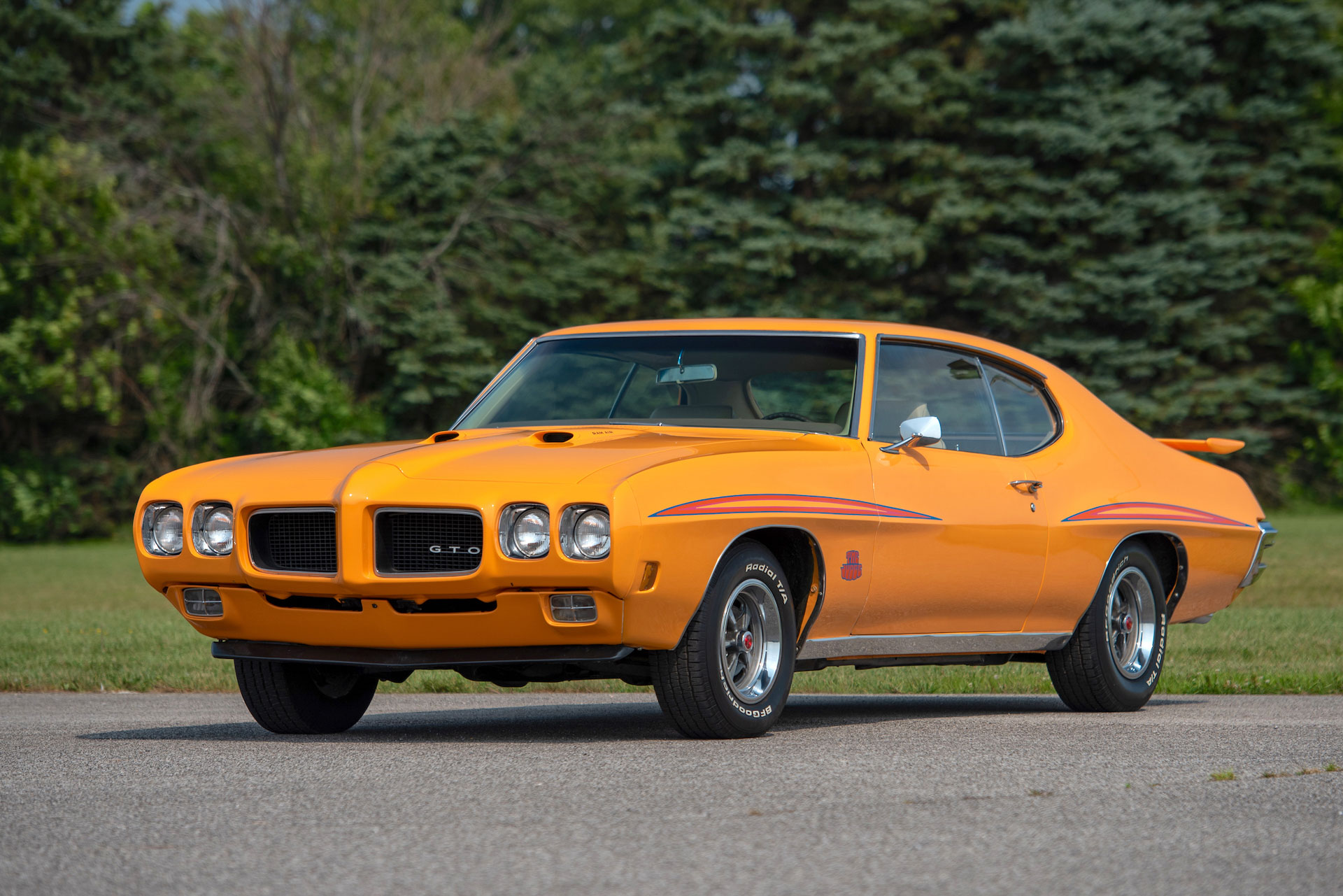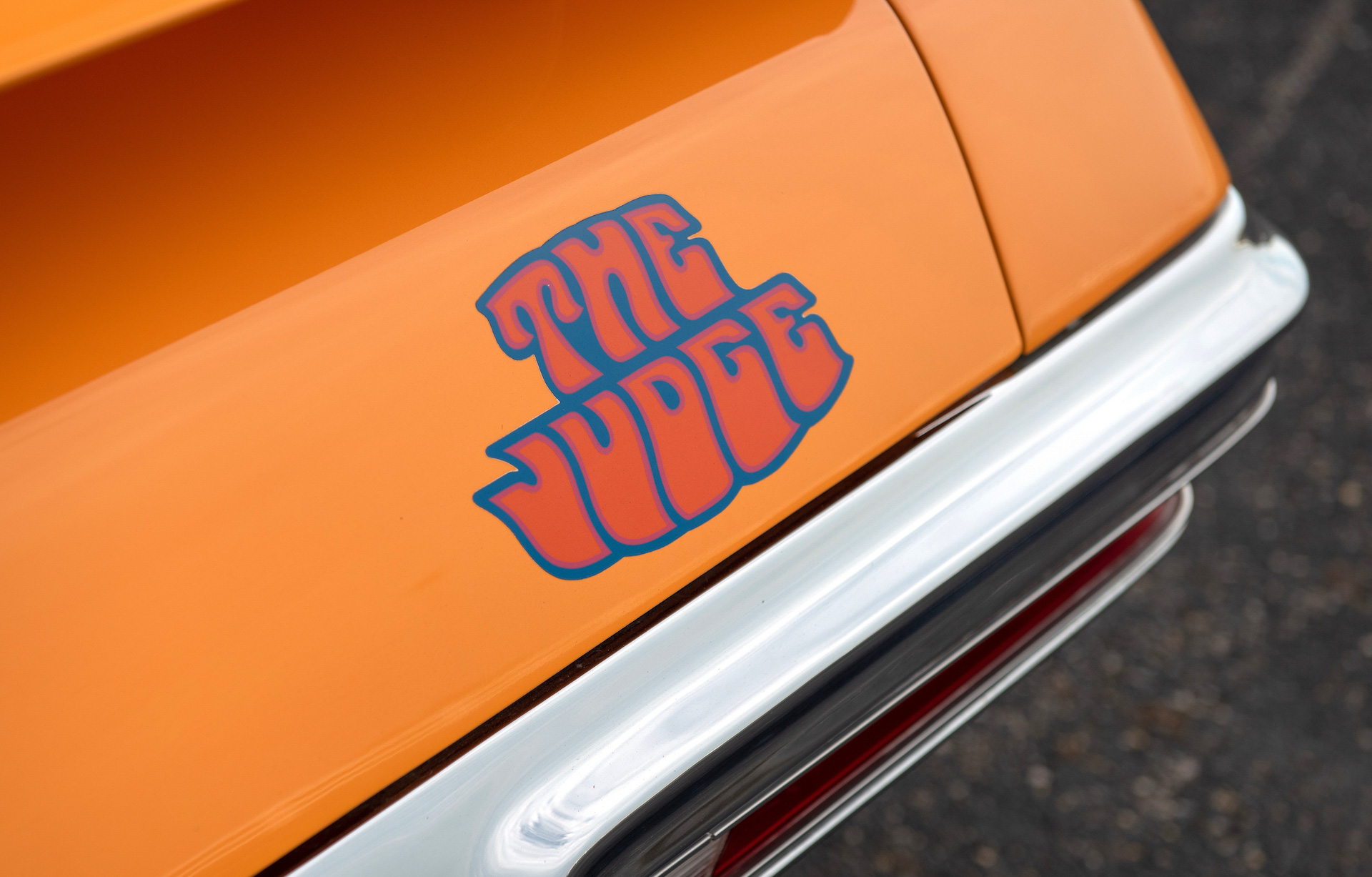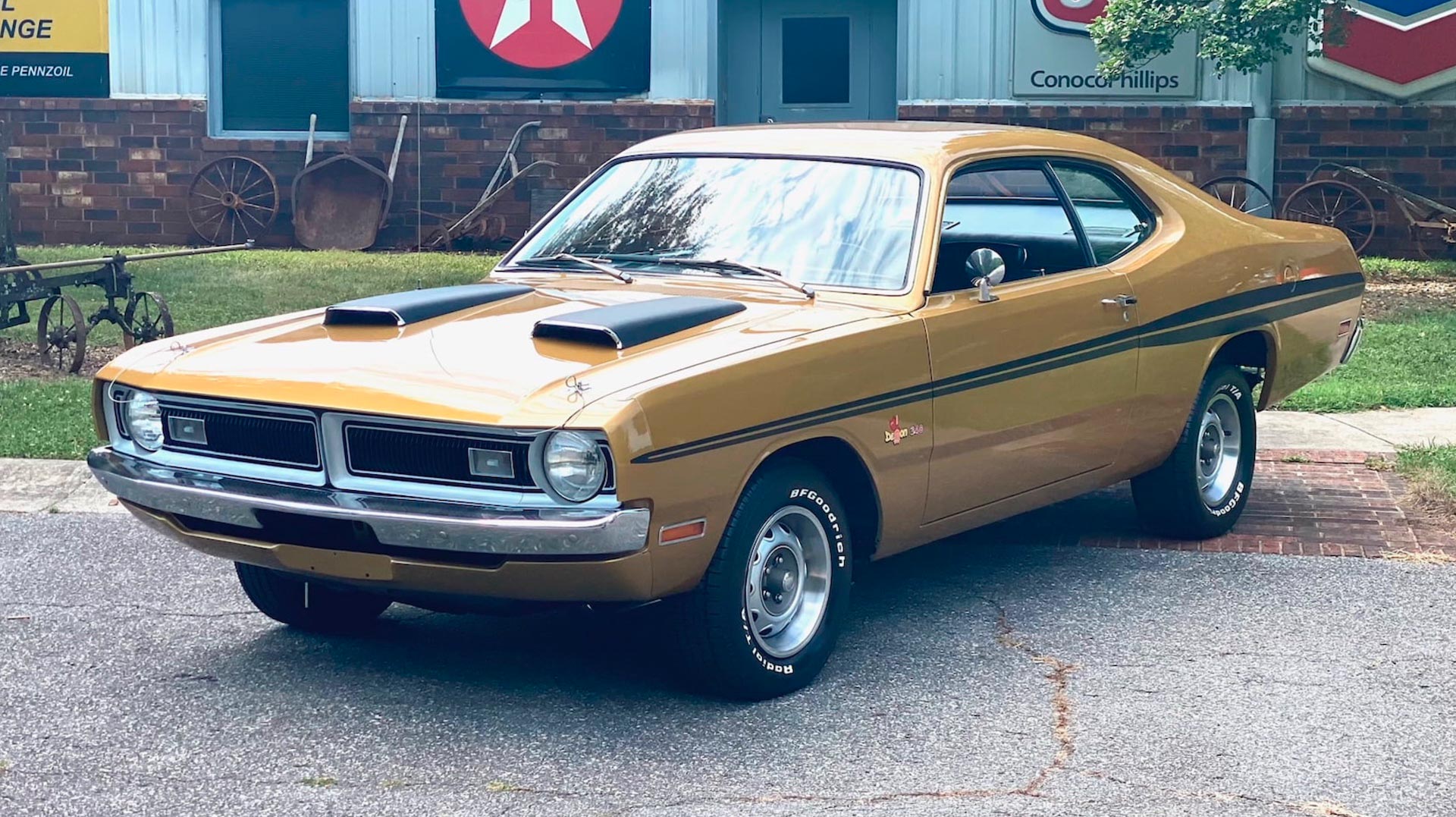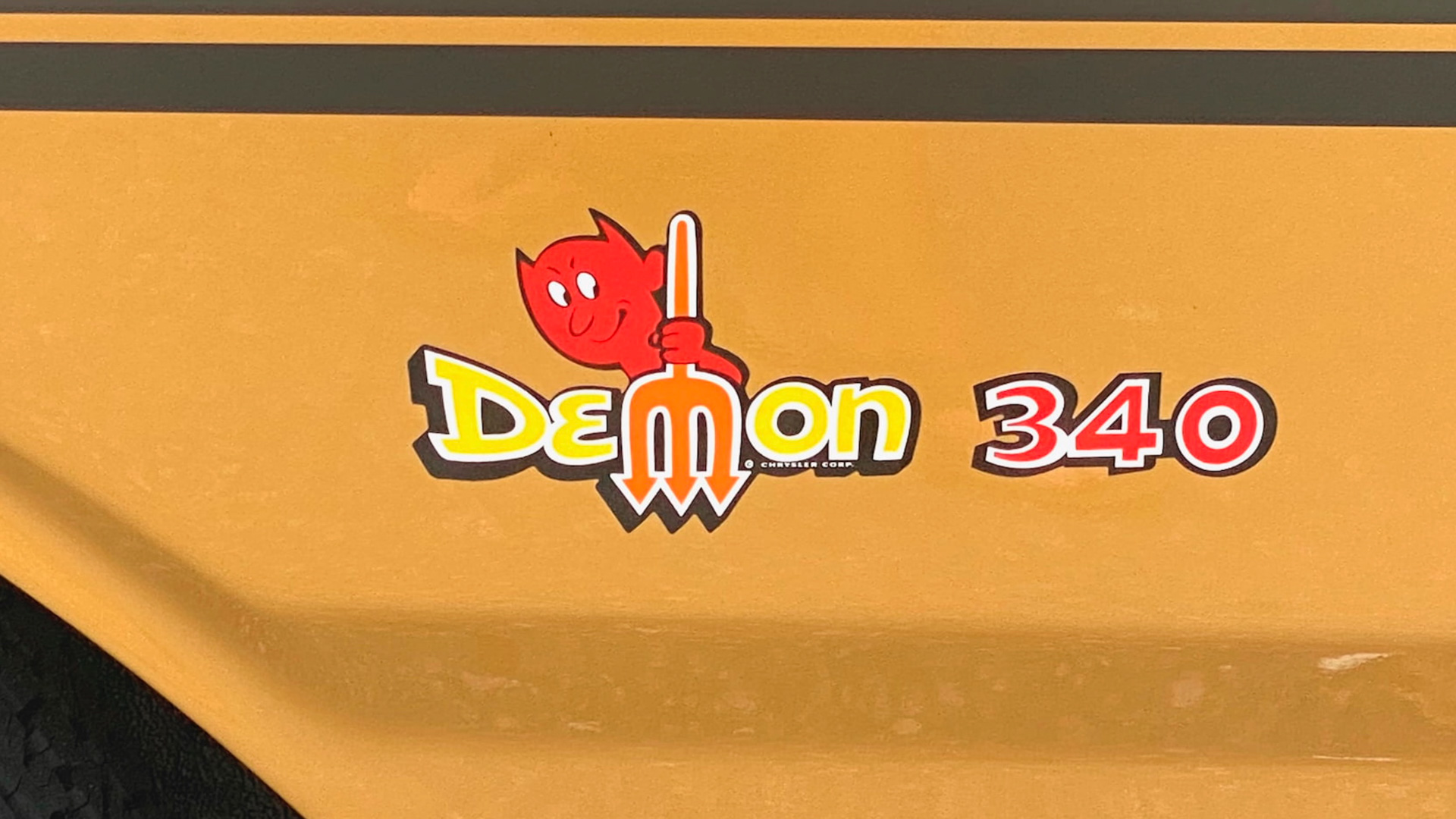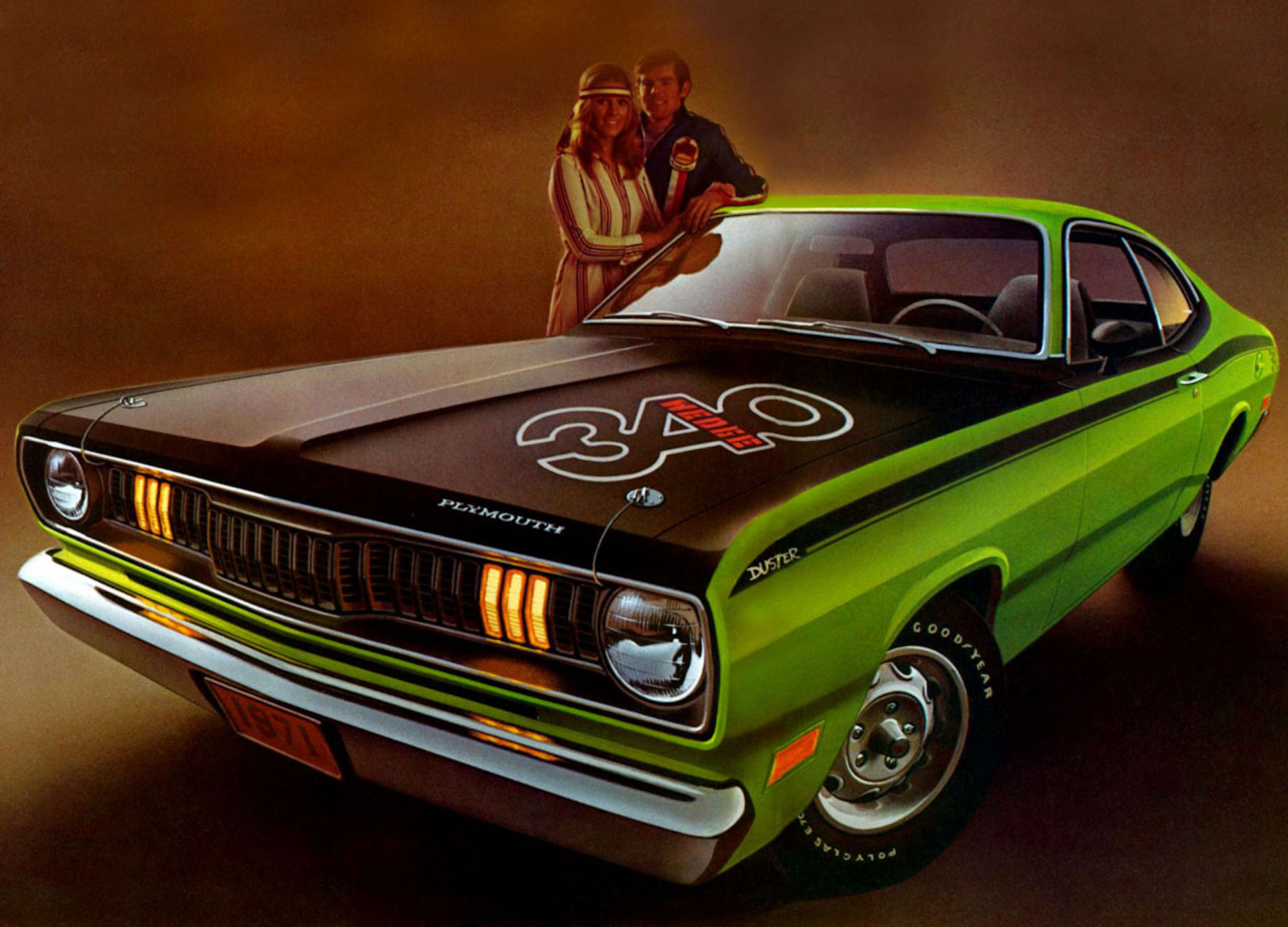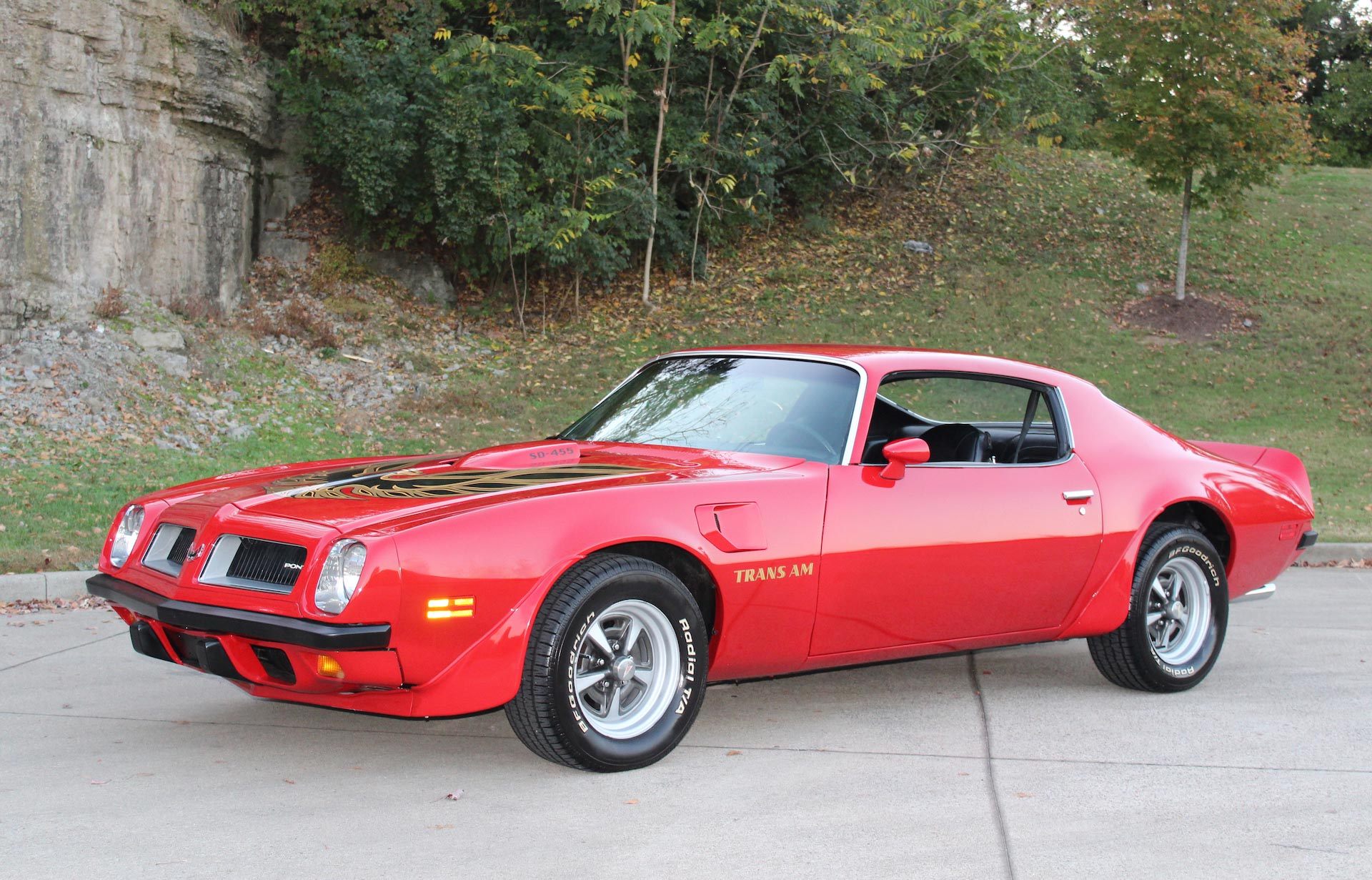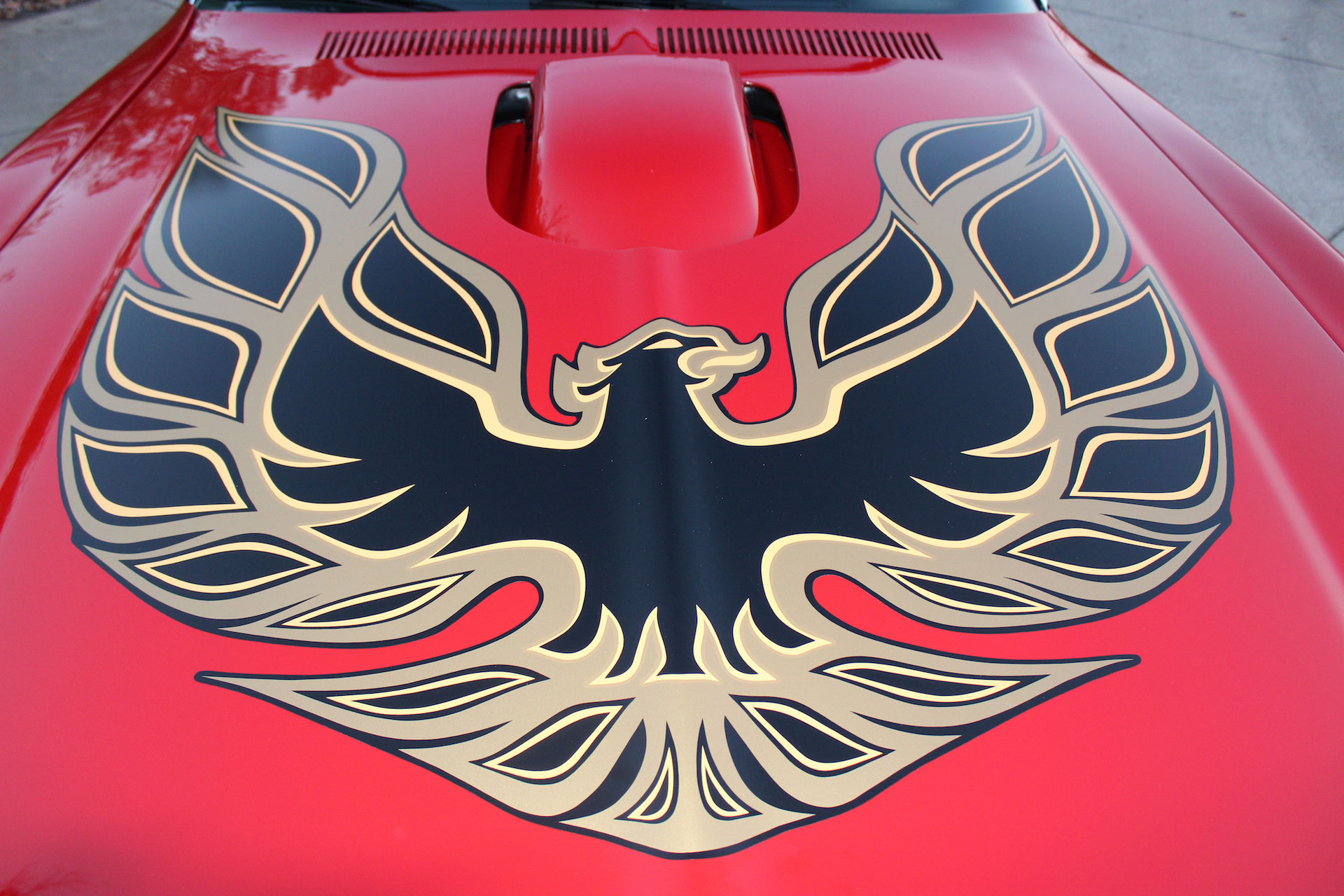Looking fast was as important as going fast at the height of the golden era of American muscle. While a handful of hardcore street racers optioned their cars with as few visual giveaways as possible, most buyers were more than happy to broadcast their car’s power to the driver in the next lane.
And automakers were more than happy to help them do it, tapping into the pop culture of the time and coming up with increasingly wild color schemes, badges, and graphics as the 1960s turned into the 1970s. But who did it best?
1963 Ford Galaxie 427
Related: 2022 Dodge Charger And Challenger Gain Hemi Orange And SRT Black Packages
Early muscle cars were incredibly stealthy. Just check out this 1963 Galaxie for proof. You might not think it was packing anything more serious than a 390 when you pulled alongside until you caught sight of the “427” script on the crossed-flag fender badge signifying that there was a thundering 7-liter mill stuffed between the front wheels.
1965 Pontiac GTO
It wasn’t the engineering behind the Pontiac GTO that was genius, but the marketing. Like naming it after a Ferrari racing car, which would be as ridiculous as Ford calling its next Focus hot hatch the “LMP1”. Later GTOs became almost caricatures of themselves, but the first cars played it kind of straight, mostly relying on these handsome triangular emblems to hint at the 389 cu-in. (6.5-liter) V8 up front.
1966 Shelby Mustang GT350
The original Shelby Mustang’s iconic, and much copied, nose-to-tail stripes were technically an option. But there were plenty of other clues, including the rear quarter window, rear fender- and hood scoops, and the Cobra emblem on the steering wheel and gas cap.
1969 AMC Hurst SC/Rambler
Related: Official GM Design Render Sure Looks Like The Cancelled Chevy Camaro Z/28, Doesn’t It?
Little American Motors wasn’t the biggest name in the late 1960s performance car game, but it pulled out all the stops to get people to notice its hottest Rambler sedan. Developed in conjunction with aftermarket performance parts company Hurst, the Sport Competition Rambler, or Scrambler as it was more commonly known, was available with a bold red and white color scheme and some wild optional hood graphics pointing to the 390-cube (6.5-liter) V8 hiding behind the pillbox-slot scoop.
1970 Buick GSX
Buick’s “Gran Sport” Skylark was launched in 1965, making it one of the original muscle cars. But in keeping with Buick’s staid image there was little beside the red “GS” lettering to clue passers-by into the 401-cu.in secret under the hood.
Come 1970 though, looking like a 50-year old dude who’d just gone through a messy divorce, hit the gym and revamped his wardrobe, the GSX appeared to shake things up. Rocking a hood tach, fat hood stripes, another set of stripes running along the flanks into a stylish hoop spoiler, and a giant “X” tacked onto the GS badge, this definitely wasn’t your grandpa’s Buick.
1970 Dodge Superbee
Arriving for 1968, Dodge’s answer to Plymouth’s more famous Road Runner used the same Chrysler B-body chassis, standard 335-hp, 383-cube (6.3-liter) V8, and also had its own cartoon character logo: a bee wearing a crash helmet, racing goggles, and sporting a set of exhaust headers poking over the top of wheels located where the legs should be. There were metal bee badges on the nose and tail, but you were more likely to spot the rear quarter stickers framed by a horizontal or vertical stripe, depending on year.
1970 Plymouth Cuda
Plymouth’s entry for the 1970 Trans Am championship, and riposte to cars like the Boss Mustang 302 and Camaro Z/28, was the Cuda AAR, named after Dan Gurney’s All American Racers. Gurney’s crew couldn’t keep pace with the Boss 302s on the track that season, but the matte-black fiberglass hood and wild segmented stripe package that culminated in “Cuda AAR” lettering, definitely made Plymouth’s pony car more of an eyeful on the street.
1970 Pontiac GTO Judge
Related: 10 Cool Vintage Muscle Cars That Aren’t The 1968 Dodge Charger
Another entry for the GTO, but this time specifically the GTO Judge offered between 1968 and 1971. It took its name from a character on the Rowan and Martin’s Laugh-In TV show, and was initially conceived as a stripped-down, value-packed quarter mile warrior in the mold of the Plymouth Road Runner, though it ended up being more of a GTO De-Luxe. Best looking, to most minds, is the 1970 model seen here, which came with prominent “Judge” logos, wheel arch eyebrow stripes, and was the only GTO available in Orbit Orange paint.
1971 Dodge Demon and Plymouth Duster 340
Proving that you didn’t need big-block power to have fun, the Chrysler twins employed punchy 340 cu-in. (5.6-liter) V8s that used their 275 hp outputs to scoot the Demon and Duster down the quarter mile in around 14.5 seconds. Dodge’s mischievous Demon logo looks about as scary as a fairy next to the Demon graphic on the side of a modern Challenger Demon, but the way the pitchfork is integrated into the lettering is fun.
Plymouth, meanwhile, played it more serious with the Duster, sticking to large “340” graphics on the rear quarters, although the optional black hood bearing the legend “340 Wedge” certainly wasn’t lacking in attitude.
1974 Pontiac Firebird Trans Am
The 1970s-era Trans Am’s screaming hood bird is its defining feature, but it wasn’t always that way. Between 1969 and 1972, the Trans Am featured stripes, not vinyl roadkill, and even when the bird was made available from 1973, it was technically an option. But could you really drive one without it?
What’s your favorite classic muscle car badge or graphic? Leave a comment and let us know.








